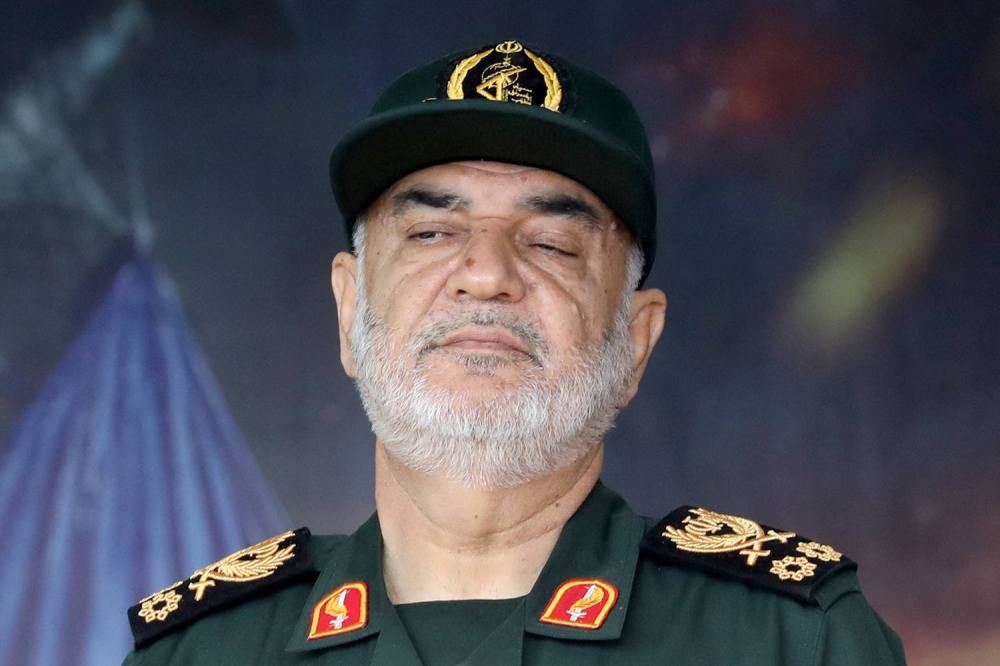The one thing that everyone could be sure of as the events of Oct. 7, 2023, unfolded was that Israel would emerge from the Hamas attack a changed country. It was not just the immediate trauma of the roughly 1,200 dead and 250 hostages, but also how much it upset the assumptions that Israelis had made in the years before—that the country was more safe and secure than any time in its history, that the Arab world was slowly accepting the inevitability of a predominantly Jewish state and prepared to push aside concerns about the future of Palestinians, and that Israel’s high-tech prowess could not just generate prosperity but also ensure security as well.
A final reckoning on such a cataclysmic event will take years to emerge. In the meanwhile, the most dire predictions—Israel becoming ensnared in prolonged, deadly, and destructive wars with Hezbollah and Iran; a tanking economy; and a deep crisis of confidence—have failed to materialize. The conflicts with Hezbollah and Iran ended in Israel’s favor with relatively little collateral damage. Economic growth has slowed, but Israel has absorbed the shock better than many expected. Trust in the military and many of the country’s key institutions has not declined significantly, if at all.
The one thing that everyone could be sure of as the events of Oct. 7, 2023, unfolded was that Israel would emerge from the Hamas attack a changed country. It was not just the immediate trauma of the roughly 1,200 dead and 250 hostages, but also how much it upset the assumptions that Israelis had made in the years before—that the country was more safe and secure than any time in its history, that the Arab world was slowly accepting the inevitability of a predominantly Jewish state and prepared to push aside concerns about the future of Palestinians, and that Israel’s high-tech prowess could not just generate prosperity but also ensure security as well.
A final reckoning on such a cataclysmic event will take years to emerge. In the meanwhile, the most dire predictions—Israel becoming ensnared in prolonged, deadly, and destructive wars with Hezbollah and Iran; a tanking economy; and a deep crisis of confidence—have failed to materialize. The conflicts with Hezbollah and Iran ended in Israel’s favor with relatively little collateral damage. Economic growth has slowed, but Israel has absorbed the shock better than many expected. Trust in the military and many of the country’s key institutions has not declined significantly, if at all.
Two important changes and one important, yet counterintuitive, nonchange have occurred over the past two years. The first change is state capture by the far right and the second is Israel’s risky dependence on the United States amid growing international isolation. The nonchange—perhaps the most critical development of all since Oct. 7—is the failure of extremist politicians to capitalize on the trauma.
The events of Oct. 7 should have played into the far right’s hands. The Hamas attack seemed to confirm the extreme right’s view of the Arabs as violent, implacable enemies that must be defeated—and that coexistence is a dangerous illusion. The military’s failure to do its duty to protect the country that day seemed to buttress the far right’s claim that Israel’s “leftist” elite, which includes the defense establishment, was defeatist, if not traitorous.
But two years later, the extremists have failed to expand their base of support. The far-right Religious Zionist and Otzma Yehudit parties won 14 Knesset seats in the 2022 election; if elections were held today, polls show them garnering no more than 12 seats, and quite possibly fewer. Religious Zionist Party alone might not win enough votes to enter the Knesset at all. Prime Minister Benjamin Netanyahu has adopted some of the rhetoric of the far right, but his Likud party has also seen its poll numbers shrink since 2022.
Part of the Israeli far right’s problem is its association with Orthodox Judaism, the West Bank settlements, and intolerance for liberal social values shared even by many right-wing Israelis, whose rightist views tend to focus on national security rather than the culture wars and immigration debates that preoccupy Western countries. In the last general election, in 2022, the extreme right captured just 10.8 percent of the popular vote, far less than the Alternative for Germany’s 20.8 percent and the National Rally’s 37.1 percent in France in recent elections.
But the failure of extremism to take hold should be interpreted carefully. Whatever lingering support in Israel there was for a two-state solution has died, and it is safe to assume that much of the violence of the war two years later is animated by feelings of revenge over the Hamas attack. The far right can celebrate both developments, even if it has failed to make hay out of them.
In any case, the failure of the far right to capitalize on Oct. 7 hasn’t caused it to lay aside its political and ideological to-do list. Indeed, it is arguable that Israel has been subject to state capture by extremist politicians and activists, many—if not most—of whom are West Bank settlers. Settlers account for about 5 percent of the population (not counting Israelis living in East Jerusalem). Yet, of the 21 people serving in the Netanyahu cabinet, five live in settlements. Netanyahu’s absolute dependence on the far right’s 14 Knesset seats to stay in power has given its ministers a virtual carte blanche to pursue their policies unhindered.
Smoke billows from the site of several explosions during an Israeli raid on the Jenin camp for Palestinian refugees in the West Bank on Feb. 2Mahammad Mansour/AFP via Getty Images
The cabinet secretary, the Israeli ambassador to Washington, and two of 11 sitting Supreme Court justices are settlers. David Zini, the new head the Shin Bet security agency is a settler, too (in the Golan Heights), and is associated with the messianic stream of Judaism. The army command remains secular and is believed to be mostly centrist (at least based on the career paths of ex-generals), but at lower levels, the far right has a large and growing representation among officers.
State capture began in earnest from the time that the current Netanyahu coalition took power in late 2022. It was the first-ever Israeli government to be composed of right-wing and ultra-Orthodox parties without any moderates to balance them out, and it immediately embarked on drives to weaken the justice system and tighten Israel’s grip on the West Bank. Oct. 7 brought the judicial overhaul to a halt, but it also opened a window for the far right to pursue its other agenda items unimpeded. The public was distracted by events in Gaza and hesitant (if not too exhausted) to go out into the streets in protest while soldiers were fighting and dying.
The most obvious arena where the extreme right has succeeded is the war itself. What began as an operation to defeat Hamas and rescue the hostages has gradually evolved into a war of conquest to reoccupy the Gaza Strip, expel its Palestinian population, and rebuild the settlements that were evacuated in 2005. Netanyahu and military Chief of Staff Eyal Zamir still insist that occupation is not a goal, but the far right speaks otherwise. In mid-September, Finance Minister Bezalel Smotrich termed Gaza a “real estate bonanza” that would be parceled out between settlers and U.S. investors when the war was over. Intentionally or not, the army is acting as the far right’s enabler by leveling cities and towns and making life so miserable that Gazans have little choice but to leave.
The other major area where state capture has manifested itself is in the West Bank. Since Oct. 7, the military has conducted operations virtually without interruption against Palestinian militias, deploying attack drones and fighter jets, occupying refugee camps, and destroying homes and infrastructure on a scale tantamount to conventional warfare. In a situation that mirrors what is happening in Gaza, the military says it is cracking down on terrorism, but in reality, it is doing the work of the far right and settlers of entrenching Israeli control and making life impossible for ordinary Palestinians.
Meanwhile, extremist settlers routinely attack Palestinian villages, vandalizing property and sometimes killing residents. These are often framed as revenge attacks for Palestinian violence, but just as often, they are unprovoked. In any case, the larger goal (which, in some cases, they have succeeded in achieving) is to drive Palestinians off their land to make room for settlements.
National Security Minister Itamar Ben-Gvir, the Otzma Yehudit party leader who is in charge of the police, makes sure that settler violence is ignored or treated lightly. Zini will likely have an ally in Ben-Gvir.
The role of the military and police in the West Bank is being supplemented by Smotrich, who—in addition to his job as finance minister—is in charge of civilian affairs in the West Bank. He has used this other hat to expand settlements, legalize ones that were built without authorization, and clear the way for more settlements by declaring that wide swaths of the West Bank are state land.
By withholding from the Palestinian Authority the tax revenues that Israel collects on its behalf, Smotrich has sought to bring about its collapse, thereby leaving a political vacuum for Israel to fill. All of this has been accompanied by a concerted effort to mainstream the idea of annexing the West Bank outright, long a dream of the far right that was of little interest to other Israelis. Today, the only thing that may stand in the way is U.S. President Donald Trump’s refusal to countenance it.
The prolonged Gaza war and its carnage have managed to turn much of the world against Israel in a way that was unimaginable in the days after Oct. 7. The horror of the Hamas attack won Israel a level of sympathy in the West—except among members of the far left—that it had not enjoyed in years. But this has dissipated as the war has dragged on and Palestinian casualties have mounted. The needle finally moved decisively against Israel this spring, after a cease-fire with Hamas collapsed and Israel sparked a hunger crisis in Gaza by cutting off humanitarian aid. The assault on Gaza City, which began in September and threatened to make an already dire humanitarian situation in Gaza even worse, was the last straw.
Protesters hold flags and photos of hostages held in the Gaza Strip by Hamas, seen ahead of a rally in Tel Aviv on Sept. 29.Amir Levy/Getty Images
The war has led to an unprecedented and risky dependence by Israel on the United States. The conflict against Hamas in Gaza, as well as the side wars with Hezbollah in Lebanon, Iran, and the Houthis in Yemen, could never have been fought without the $22 billion of financial assistance and vast quantities of arms and ammunition shipped to Israel from the United States since Oct. 7. The United States came to Israel’s direct assistance in its fight with Iran. Indeed, Israel’s recent pretensions of being a regional superpower are undercut by its dependence on U.S. arms and, in many cases, its consent to undertake military actions.
The dependence on the United States has been underscored in recent months by Western Europe distancing itself. This has been expressed in a combination of largely symbolic moves—most notably being the recognition of a Palestinian state—and more concrete measures—such as arms embargoes, canceled weapons contracts, and divestments by investment funds. The European Union hasn’t been able to muster the majority needed to suspend Israel’s preferential trade status, but such a move remains on the agenda. Public opinion in Europe has also turned strongly against Israel.
Many Israelis, including Netanyahu himself, regard Europe as a spent force that the country can afford to ignore. But that isn’t true: The European Union is not only its biggest trade partner and buyer of arms but also a major supplier of weapons to Israel. Many Israelis regard Europe as their second home—their preferred vacation destination and source of culture and entertainment—and will be stung by rejection.
Netanyahu seems comfortable relying on the United States, but Israel’s U.S. support base is rapidly narrowing to the point that it could be argued that it is no longer all of the United States but limited to the Republican Party. And even among Republicans, support seems to be on the wane.
If the Gaza war and Israel’s policy of deploying the military to solve problems across the region were to end, Israel’s growing isolation and dependence on the United States could be slowed, if not reversed.
But that doesn’t seem likely, even though the Trump peace plan offers the best promise to date for ending the war in Gaza. Netanyahu had made it clear he believes that Iran, Hezbollah, and Hamas remain threats that will require the continued use of military force. He and Hamas have a joint interest in scuttling the Trump initiative. If there is any hope for an end to Israel’s trigger-happy strategy and far-right state capture, it will come from elections. Fortunately, Israelis’ refusal to buy into extremist politics holds open a window for just such a change.



